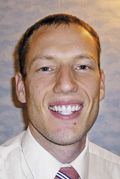Using social media to improve patient care and outcomes
Social media is a great tool for networking and bringing people together, not to mention a free and easy way to build your optometry practice. Social media entities are built primarily for communication. Sharing ideas, creating awareness, and coordinating activities are a few of the activities that a person can devote some time doing. Social media is a versatile creature of intrigue that develops into what we create, whether it be establishing a social awareness campaign, joining a cause, or finding a few friends to volunteer with. Social media has a lot to offer a philanthropic individual with just the click of a mouse.
Many optometry practices have realized the benefits of social media and have started marketing strategies to attract new customers. The marketing effort of private practice offices has begun equalizing patient exposure that was formerly attainable only with big budgets and large advertising departments. No matter your stance as a practitioner, whether you are involved in corporate optometry or private practice, the benefits of social media are something everyone can use to bolster patient care and outcomes.
Creating an online presence
The real question is how optometry (or any business) can implement the structure of social media outlets like Facebook, Twitter, and Linked In while not leaving out some of the newer boulevards of Google Plus and Pinterest. Not every practice needs to make a Pinterest business page, and not all practitioners need to revive their dead MySpace profiles to be successful. Practitioners should develop an online presence of their own because patients write online reviews all the time.

Web sites like Yelp may warrant a visit from busy practitioners because patients are constantly leaving reviews about their healthcare experiences, both good and bad. No matter how busy your schedule, it would be wise to take a moment and peruse the Internet to see what has been written about your service as a healthcare provider. The challenge has already begun, and practitioners must defend their own reputation from the scrutiny of patient perception. Whether or not a review is fair is mostly irrelevant. Business consumers reading reviews are rarely given additional information from review Web sites before reaching final decisions. Review sources, such as Angie’s List, strive to dig deeper when looking for a doctor online. Angie’s List claims its evaluations are better than free review sites for 4 basic principles:1
• No anonymous reviews
• Certified data collection process
• Complaint resolution team
• Company/providers respond to reports
Remember, when responding to reviews, be courteous and honest, but keep it short. The last thing most patients want to read is an extended story. Defend yourself and be done with it, and when appropriate offer the patient an opportunity for you to make things right. Though the customer is not always right, he should feel you are interested in him; listening and trying to offer the best service possible can go a long way to improving customer satisfaction.
The ability to navigate review sites like Yelp or Angie’s List is an important venture worthwhile to help ensure quality customer service online. If a practitioner doesn’t have time or want to worry about this aspect of the practice, it can easily be delegated to an office manager or an office assistant better suited for the job. While it is not all about marketing, developing a presence online can help ensure your customers know they are getting exceptional service that will be consistent with the growth of your practice. The better you become at responding to customer comments, the more efficient you will be at keeping the referrals from online review sites. It has been said by many practitioners today that the best way to grow a practice is by word of mouth, so remember that a review site is the Internet’s version of what people have done for years.
Engaging patients
Coordinating activities is another activity that can keep patients involved with a practice. Whether it is letting the patients choose the color of your next office paint job or a few pieces of art to add to the office, a Pinterest business account can add atmosphere to an office. Patient involvement in an office gives them ownership of the practice. Patients feel more welcome and comfortable in a place that they helped create. A sense of accomplishment creates the opportunity to build relationships of trust and commitment.
In the past, optometrists wrote feature stories in the newspaper or shared a newsletter. Today, optometrists need to be on the Web sharing ideas and conversing with their population base. Publishing articles (online) is still an excellent way for an optometrist to become an established expert practitioner. Blogs are another wonderful way to create awareness and educate patients. They help communicate information in a way that speaks volumes to patients. Just imagine the joy in sharing your passion for optometry on your blog and educating patients about disease prevention or the latest contact lens design. Staying up to date with social networking conveys knowledge of new technology and current trends in the industry. Patients appreciate the efforts of practitioners that are current on all things optometry.
Along with educating patients comes the passion for the profession. One fun way to share is Instagram, an online portal for pictures. Instead of inviting patients over for a slide show of your most recent mission trip, consider posting a link on Facebook to Instagram. That could be just the beginning of optometrists using social media.
Looking ahead
The future of social media and optometry extends beyond what we know today. Current research across America is moving toward video gaming platforms for solving some of the most complex problems in our society. An article by Dayton Fandray outlines the advances individuals are making with scientific gaming.2 The technology, termed “gamification,” involves video game enthusiasts working to unlock the mysteries of protein molecules that have eluded the smartest supercomputers. Gabe Zichermann, a guru of the craze states, “The world is full of idealistic people with great ideas and a vision for how things could be better.” He continues, “[Humans] have a ‘last mile’ problem of sustaining people’s engagement long enough to complete a problem.”2
Optometrists deal with this on a daily basis with almost every savvy patient equipped with an iPhone or Android device. Who is to say that patients couldn’t educate themselves about eye disease via social media? Many patients already play farming games on Facebook, run a business online, or have led a battle surge. Fandray believes “the immersive nature of the online experience…has created exciting new possibilities for engaging students in learning activities.”2 Online games for anatomy are already available for optometry students, and perhaps these could extend to help patients learn about the eyes and what doctors recommend.
The key for any changing climate is preparation. The future waits for no one and needs no invitation before it changes the way we communicate. A practitioner must be ready to embrace change, and be willing to expect success through new corridors. Optometrists should familiarize themselves with at least one form of social media and become an expert…or at least step up above an amateur level of understanding and embrace the ideas that fit their mode of practice best.
Practitioners would do well to start with one of the mainstream networks, such as Facebook, or a broad network like Google Plus and begin following a few meaningful groups and individuals that match their goals. Followers are more interested in who you are than what you sell, so share what you do and what you believe. If you are stuck, here are a couple of things recommended by one social media blogger: share other people’s links and tips, your ideas, and educational information.3 Sites like All About Vision, or Medscape are also great references that can be used to help educate patients. Whatever practitioners decide to post, it should be meaningful to patients and help improve the quality of care. With all the ways to share, it should be easy to inspire those around us to a better tomorrow. There is no time better than the present to begin a new tradition to improve patient care and outcomes with social media.ODT
References
1. How it works. http://www.angieslist.com/how-it-works.htm. Accessed March 1, 2013.
2. Fandray D. Gamification: Game-playing offers winning ways to solve real-world problems. Alaska Airlines Magazine. 2013 Feb:92-98. http://www.journalgraphicsdigitalpublications.com/epubs/PARADIGM%20COMMUNICATIONS%20GROUP/ParadigmAlaskaAirFebruary2013/#?page=92. Accessed May 21, 2013.
3. The Benefits of Google Plus for Business. 8 May 2012. http://marketandconvert.com/blog/social-media-marketing/the-benefits-of-google-plus-for-business/. Accessed March 1, 2013.

Note: Dr. Nicholas Gubler’s essay won this year’s American Optometric Society Dr. Harvey Yamamoto Award. Gubler recently graduated in the inaugural class at Arizona College of Optometry, Midwestern University, Glendale. Contact him at ngubler82@midwestern.edu.
Newsletter
Want more insights like this? Subscribe to Optometry Times and get clinical pearls and practice tips delivered straight to your inbox.
2 Commerce Drive
Cranbury, NJ 08512
All rights reserved.